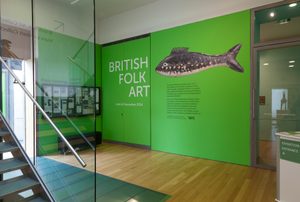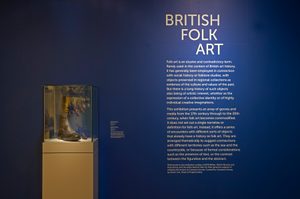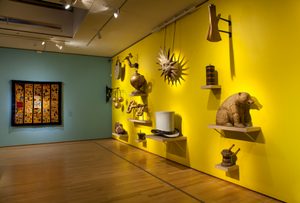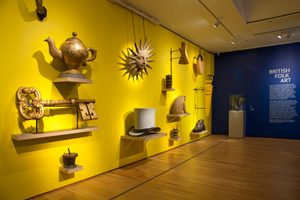
British folk art exhibition
27 September 2014 – 14 December 2014
About the
exhibition
It was the first major survey of British Folk Art and challenged, delighted and surprised, breaking through pre-conceptions about what Folk Art really is. The exhibition featured over 180 paintings, sculptures, textiles and objects which have been drawn together from collections across the country to celebrate Folk Art in the UK.
Folk Art is an established subject in many countries; however in Britain the genre remains elusive. Rarely considered in the context of art history, ‘Folk Art’ has been viewed as part of social history or folklore studies. This show united an extraordinary selection of objects, exploring the threshold between art and artefact and challenging perceptions of ’high art’.
The exhibition included surprising and diverse examples of British Folk Art, from rustic leather Toby jugs to brightly coloured ships’ figureheads. The imposing larger than life-size thatched figure of King Alfred created by a master thatcher, Jesse Maycock, in 1960 was just one of the highlights of the exhibition. Other highlights included maritime embroidery by fisherman John Craske, an intricately designed pin cushion made by wounded soldiers during the Crimean war, shop signs and whirligigs.
While much Folk Art is anonymous, this exhibition also presented works by a number of prominent individuals. Amongst these key figures are George Smart the tailor of Frant, eminent embroiderer Mary Linwood and Cornish painter Alfred Wallis. Often neglected in the story of art in Britain, the inclusion of these artists aims to reassess their position in art history.
The exhibition was curated by Martin Myrone, Curator, Tate Britain, Ruth Kenny, Assistant Curator, Tate Britain and artist Jeff McMillan.
























